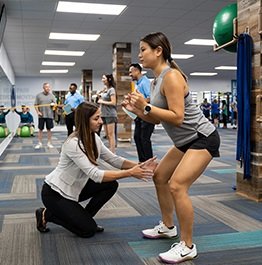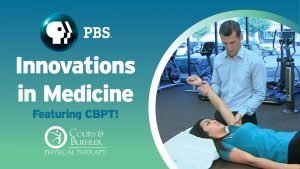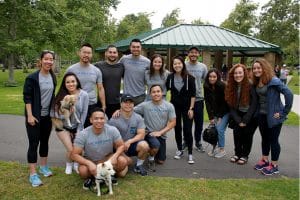
Does Running Increase Your Risk of Osteoarthritis?
October 04, 2017Running has been known to promote good overall health by reducing stress, lowering cholesterol, and improving your mood. However, there have been concerns about the negative effects of running on your joints.
Because of the high impact forces and amount of stress running places on your weight-bearing joints, it would seem natural to think that your joints are taking a beating with every step you take. So, this raises the question: does running increase your risk of developing osteoarthritis (OA) in your hips and knees?
Osteoarthritis for Runners
According to an article recently published in the Journal of Orthopedic and Sports Physical Therapy, the answer to the above question depends on the frequency and intensity of running. The researchers of this article reviewed 17 other studies that included 113,819 individuals, and compiled their data on the association between running and OA.
What they found was that:
- Recreational runners actually had a lower incidence (3.5%) of hip or knee OA than individuals who were sedentary and did not run (10.2%).
- While competitive runners had the highest incidence (13.3%) of hip or knee OA.
What kinds of runners are at risk?

Recreational runners (3.5%)

Nonrunners (10.2%)

Competitive runner (13.3%)
From these results, it turns out that recreational runners had a lower chance of developing OA compared to sedentary individuals because of the protective effects running has on the hip and knee. Competitive runners, on the other hand, had the highest incidence of OA most likely due to the high volume and high intensity of their running. Competitive runners were defined as those who run more than 57 miles a week and recreational runners were those who had less than 15 years of running exposure.
So what does this mean for you?
Yes, technically running does increase your risk of developing OA, but that’s only if you do too much of it. Otherwise, running is perfectly safe and actually good for your overall joint health. And staying active in some form is better than being sedentary and sitting at home all day if you don’t want your joints to degenerate. When it comes to protecting your joints, you need to stay active, but be careful not to overdo it!
References: Alentorn-Geli E, Samuelsson K, Musahl V, Green CL, Bhandari M, Karlsson J. The Association of Recreational and Competitive Running With Hip and Knee Osteoarthritis: A Systematic Review and Meta-analysis. J Orthop Sports Phys Ther 2017;47(6):373–390
Do you think you’re at risk for Osteoarthritis? Come and speak with one of our PTs for more information!
Want more health tips sent straight to your inbox?
Sign up for Life+!
Jason enjoys watching movies, spending time with his friends, playing computer games, and snowboarding whenever it is in season.
Latest posts by Jason Wong, PT, DPT (see all)
- 3 Easy Exercises to Reduce Neck and Shoulder Pain - February 07, 2018
- Heat vs. Ice: Which One Should I Use for My Pain? - February 05, 2018
- Progressions for Core-Strengthening Planks - January 22, 2018
- What is TENS and How Can it Relieve My Pain? - December 27, 2017
- Five Conditions You Didn’t Know Physical Therapists Treat - October 26, 2017
- Does Running Increase Your Risk of Osteoarthritis? - October 04, 2017
- Four Progressive Exercises for Low Back Pain - September 11, 2017
Reader Interactions
Leave a comment Cancel reply
You must be logged in to post a comment.
SIGN UP FOR
LIFE+ is a FREE membership
that offers:
• Informative Newsletters
• Health & Wellness Tips
• Videos from Our Experts
• Special offers
…and much more!
SEARCH

GET MORE TIPS! PAIN 101 TUTORIALS
EXPLORELATEST TWEETS
ARCHIVES
- February 2025
- August 2024
- February 2024
- November 2023
- September 2023
- July 2023
- June 2023
- January 2023
- November 2022
- October 2022
- September 2022
- August 2022
- July 2022
- June 2022
- May 2022
- April 2022
- March 2022
- December 2021
- November 2021
- October 2021
- September 2021
- August 2021
- July 2021
- June 2021
- April 2021
- March 2021
- February 2021
- January 2021
- December 2020
- November 2020
- October 2020
- September 2020
- August 2020
- April 2020
- March 2020
- February 2020
- January 2020
- December 2019
- November 2019
- October 2019
- September 2019
- August 2019
- July 2019
- June 2019
- May 2019
- April 2019
- March 2019
- February 2019
- January 2019
- November 2018
- September 2018
- August 2018
- July 2018
- June 2018
- May 2018
- April 2018
- March 2018
- February 2018
- January 2018
- December 2017
- November 2017
- October 2017
- September 2017
- August 2017
- July 2017
- June 2017
- May 2017
- April 2017
- March 2017
- February 2017
- January 2017
- December 2016
- November 2016
- October 2016
- September 2016
- August 2016
- July 2016
- June 2016
- May 2016
- April 2016
- March 2016
- February 2016
- January 2016
- December 2015
- November 2015
- October 2015
- September 2015
- August 2015
- July 2015
- June 2015
- May 2015
- April 2015
- March 2015
- February 2015
- January 2015
- December 2014
- November 2014
- October 2014
- September 2014





